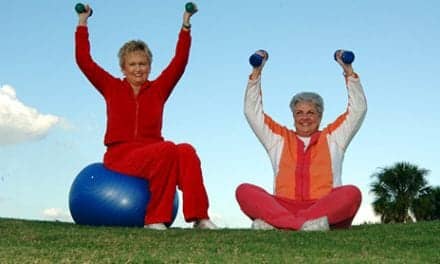The Lifestyle Interventions and Independence for Elders (LIFE) trial, a randomized trial of physical activity in older adults, asserts that a carefully structured, moderate physical activity program can reduce the risk of losing the ability to walk without assistance. The American Physical Therapy Association (APTA) reports that the LIFE train included 1,635 sedentary men and women aged 70 to 89 years at risk of disability. Participants in the study were randomly assigned to a program of structured, moderate-intensity physical activity or to a health education program focused on successful aging, and were then monitored for 2.6 years.
The physical activity intervention involved walking as well as flexibility, strength, and balance training, according to the APTA news release. Participants in this group attended two center-based visits a week in individualized sessions that worked toward a goal of 30 minutes of walking daily at moderate intensity, 10 minutes of balance training, 10 minutes of primarily lower-extremity strength training by means of ankle weights, and large muscle group flexibility exercises. Health education program participants attended weekly education sessions on healthy aging for the first 26 weeks of the intervention, and then attended monthly sessions.
The results of the trial showed that the incidence of major mobility disability, defined as the inability to complete a 400-m walk test within 15 minutes without sitting or the aid of a person or walker, was notably higher among the education group, with 35.5% experiencing the disability compared with 30.1% of the physical activity group. The APTA news release also notes that persistent mobility disability was experienced by 19.8% of the education group and 14.7% of the physical activity group. The participants who began the study with lower baseline levels of activity received “considerable benefit” from the activity intervention, according to authors of the study.
The authors of the study write, “These results suggest the potential for structured physical activity as a feasible and effective intervention to reduce the burden of disability among vulnerable older persons, in spite of functional decline in late life.”
[Source: APTA]





